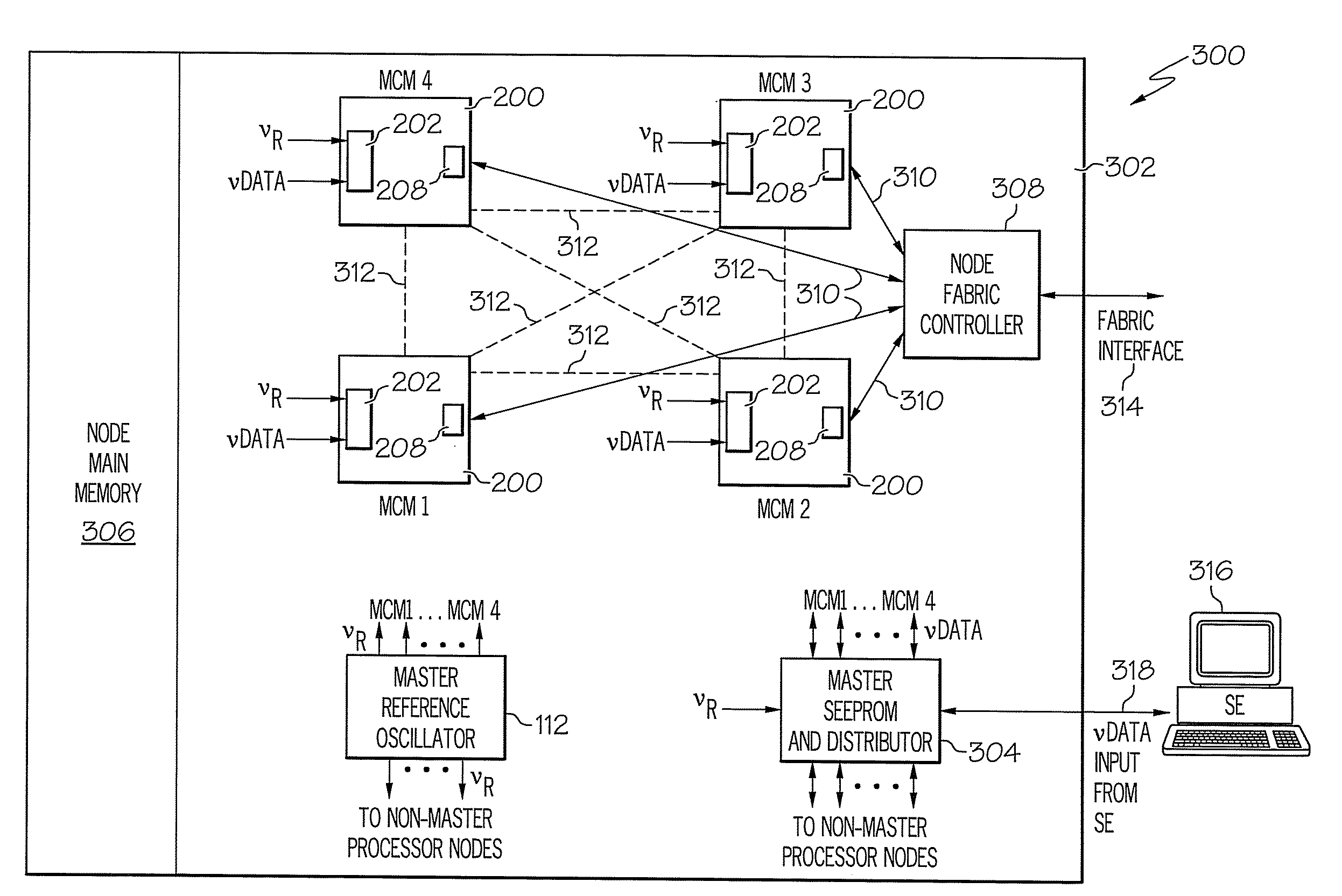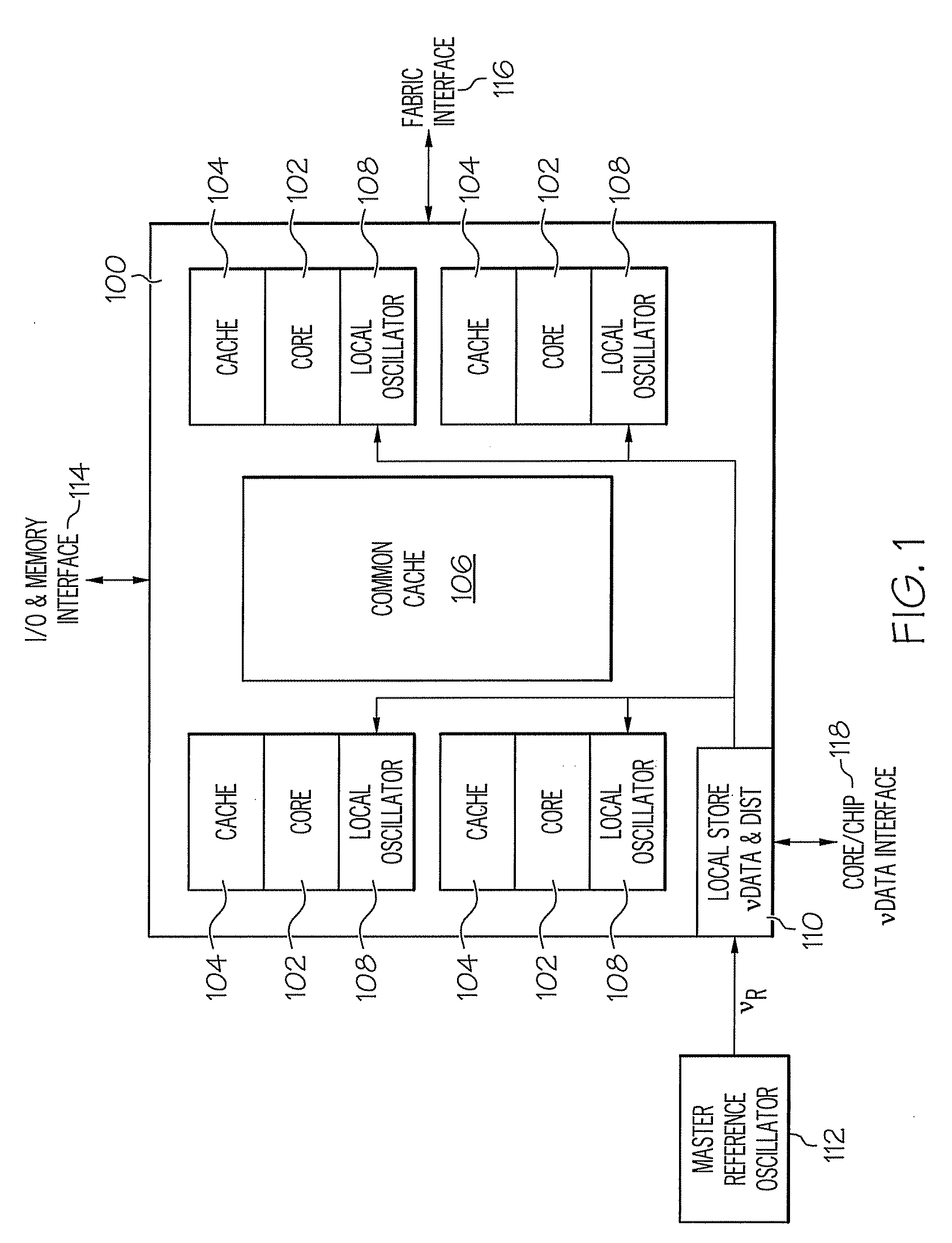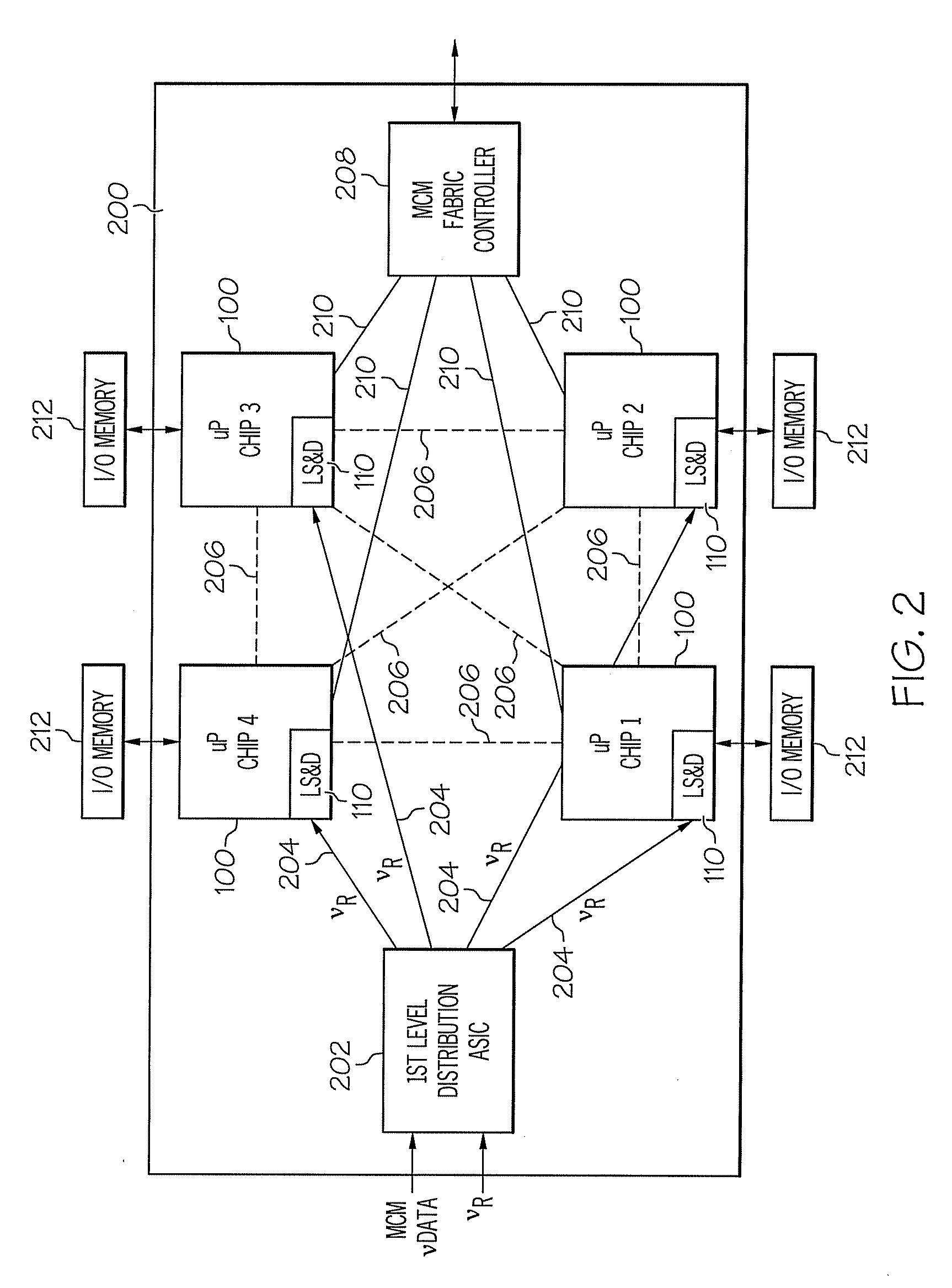Methods and systems for digitally controlled multi-frequency clocking of multi-core processors
a multi-core processor and multi-frequency clocking technology, applied in the field of computer system clocking, can solve the problems of inability to scale, and inability to achieve long-term strategy, and achieve the effect of improving power managemen
- Summary
- Abstract
- Description
- Claims
- Application Information
AI Technical Summary
Benefits of technology
Problems solved by technology
Method used
Image
Examples
Embodiment Construction
[0019]Exemplary embodiments provide methods and systems for digital multi-frequency clocking in multi-chip and / or multi-core processor systems. In exemplary embodiments, a computer system (e.g., a server) clocking subsystem with a single system reference oscillator provides both a reference clock for the computer system and a reference for individual processor cores but is not used directly to generate the individual core clocks. The system reference oscillator is used to provide a level of synchronization for the individual core clocks, which may be tightly synchronized or loosely synchronized based on the platform architecture. Exemplary embodiments allow for both tightly or loosely synchronized processors (e.g., based on local oscillator design) simultaneously within the same platform or a combination thereof, including degrees of asynchronous optimization.
[0020]Clock distribution to each processor chip and core may be achieved with a digital data signal via a distribution networ...
PUM
 Login to View More
Login to View More Abstract
Description
Claims
Application Information
 Login to View More
Login to View More - R&D
- Intellectual Property
- Life Sciences
- Materials
- Tech Scout
- Unparalleled Data Quality
- Higher Quality Content
- 60% Fewer Hallucinations
Browse by: Latest US Patents, China's latest patents, Technical Efficacy Thesaurus, Application Domain, Technology Topic, Popular Technical Reports.
© 2025 PatSnap. All rights reserved.Legal|Privacy policy|Modern Slavery Act Transparency Statement|Sitemap|About US| Contact US: help@patsnap.com



